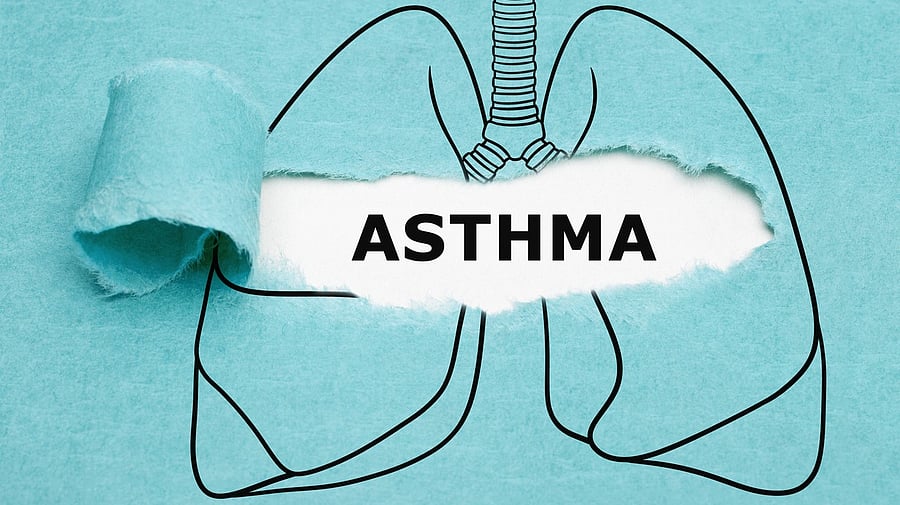
Representative image showing the word 'asthma'.
Credit: iStock Photo
Bengaluru: Increased exposure to artificial light, especially among people working night shifts for a prolonged period, has the potential to exacerbate asthma, wheezing and other respiratory allergic diseases.
A recent study by Prof Dr H Paramesh, paediatric pulmonologist and professor, Divecha Centre for Climate Change, IISc, published in The European Society of Medicine’s Medical Research Archives, explored the environmental risk factors for allergic respiratory diseases, bringing forth lesser-known, sometimes controllable factors to prevent illnesses.
“Artificial light, particularly that with a blue tinge, disturbs one’s sleep cycle and circadian rhythm, decreases the secretion of melatonin, and impacts the body’s general healing process. The airway diameter is directly linked to the circadian rhythm, which decreases due to disturbed rhythm and aggravates wheezing and asthma attacks,” he explained.
People working long hours, people spending long hours in front of digital devices, those working overnight shifts such as doctors and nurses, and truck drivers are a few examples of people at risk, he added.
Other risks, prevalence
Air pollution is the other major contributor to the earliest onset of non-communicable diseases, causing rhinitis, atopic dermatitis and asthma even in young children without a necessary genetic predisposition to developing these disorders, Dr Paramesh said.
Changing humidity and temperatures will increase dust and pollen-related allergies, while drought conditions will increase the concentration of dust particles in air.
According to the paper, children are most at risk due to air pollution and are vulnerable to developing chronic respiratory conditions that will, without mitigating efforts, increase their risks of morbidity and mortality, he observed. Pregnant mothers, especially those exposed to traffic pollution, are at risk of having stillbirths, premature births or birthing children with fixed airway obstructions, which lead to life-long airway issues.
Lung function begins to decrease by 15-20ml per year in vital capacity, therefore the elderly form the next vulnerable group. Urban residents in high rise buildings and poorly ventilated spaces also suffer with little to no symptoms in the beginning but experience aggravated conditions due to exposure to pollution, noted the paper.
Citing his earlier studies published in peer-reviewed journals, he said that, in the general paediatric population in Bengaluru, allergic rhinitis more than doubled from 22.5% in 1994 to 50% in 2022.
In India, the prevalence of chronic cough has increased from 8% in 1999 to 21.25% in 2017. “We suggested that we will see a 0.5% increase in the prevalence of chronic cough every year, which is subject to further research,” noted Dr Paramesh.
“Going forward, if we do not implement focused strategies to reduce pollution, even the simplest of respiratory infections could be of great concern to public health as lung capacity will be compromised due long-term exposure to these risk factors. Of particular concern is the suspended particulate matter below PM2.5 that can go deep into the lungs and enter the bloodstream as well, causing serious health issues in other major organs in the body," he said.